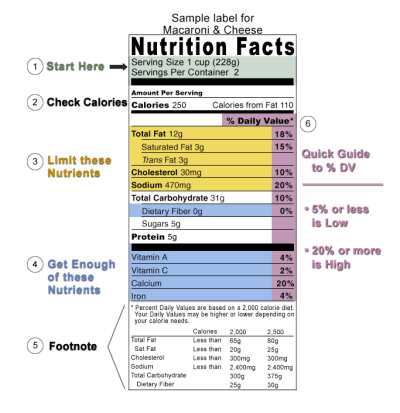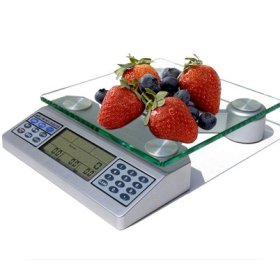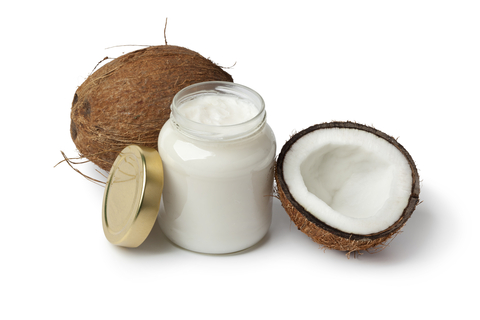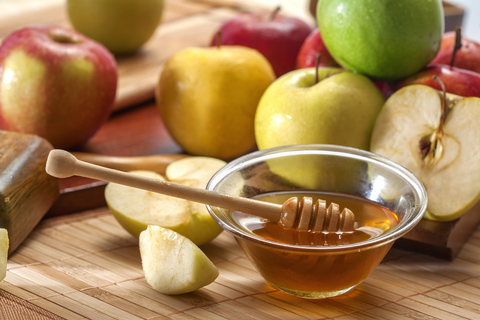Educate yourself about the nutrition fact label and use it regularly when shopping. It provides valuable information that will help you make wise food choices. Remember, knowing is always better than not knowing! You can bury your head in the sand but it will show up on your bathroom scale!
Serving Size and Servings Per Container
Together, these two items make up the most important information provided by your nutrition fact label! Note them carefully. This information can be very misleading. Everything else on the label is based on this information! Many times, you will think you’re eating one serving when you’re actually eating two or more. Looks can be deceiving! BE CAREFUL! Always ask yourself, “How much am I consuming?”
Number of Total Calories and Number of Calories from Fat
Remember that all information on the nutrition fact label is PER SERVING. If you have two servings per package, you must double these numbers. A calorie is a unit of measure that tells you how much energy is provided per serving of that food. A general guide to calories is that:
- 40=low
- 100=moderate
- 400=high
In order to reach and maintain an optimal weight, you must expend more calories than you consume. (Sounds so easy, right?) It’s that “expenditure part” that does most of us in.
To roughly estimate how many calories you need each day, follow this guideline:
- Are you sedentary? Multiply your weight by 14
- Are you moderately active? Multiply your weight by 17
- Are you active? Multiply your weight by 20
What if you’re trying to lose weight? Personally, I would multiply using my desired weight, but that is not based on research. Are you beginning to see why the nutrition fact label is so important when it comes to making wise food choices?
Nutrition Numbers
Nutrition numbers consist of total fat, saturated fat, trans fat, total carbohydrates, dietary fiber, sugars, protein, and milligrams of cholesterol and sodium. Some nutrition labels also list monounsaturated fat, polyunsaturated fat, and milligrams of potassium. Some important vitamins and minerals are not required to appear on the nutrition fact label, but many manufacturers add them anyway.
Notice that the first several nutrients are the ones you want to LIMIT in your diet. Eating too much fat, saturated fat, trans fat, cholesterol, or sodium may increase your risk of heart disease, cancers, and high blood pressure. The nutrients listed next are the ones that you need to make sure you get enough of. Most people don’t get enough fiber, vitamin A, vitamin C, calcium, and iron. Getting enough of these nutrients can improve your general health and reduce your risk of some diseases and conditions.
Some nutrition fact labels list a footnote at the bottom of each label. Some footnotes are complete and some are not, depending on the size of the label. The footnote simply lists, based on the 2,000-calorie diet, the recommended dietary amounts for all Americans. This information is standard and does not change from label to label.
Click here to see your Recommended Daily Nutritional Guidelines

Percent Daily Values (%DV)
The Percent Daily Value (%DV) is a valuable tool that shows you how much of each nutrient one serving provides based on a 2,000 calorie-per-day diet. You do not have to consume 2,000 calories a day to use these numbers. This is just the standard. You don’t have to calculate anything in order to benefit from this information! The %DV does the math for you!
As a rule of thumb, 5% DV or less is low, while 20% DV or more is high. Remember that everything is dependent upon portion size. If you double the amount you consume, you must double the numbers!
Example: One serving of this product has 18%DV of fat, which is less than 20%, and therefore not “high.” If you eat two servings, which is the entire package, you have consumed 36%, well above “high.” That would only leave you 64% of your fat allowance for everything else you eat that day. For nutrients that you tend to get too much of (fat, cholesterol, sodium), you want to try to total 100% or less of the Recommended Daily Value (RDV) each day.
When reading nutrition fact labels, look to see that the nutrients you want to get more of (carbs, fiber, vitamins, minerals) have higher percentages and the nutrients you want to get less of (fat, cholesterol, sodium) have lower percentages.
You can also use %DV to compare similar products and you can check products labeled “reduced fat”, “light”, and “nonfat” to see which has the highest percentage of a nutrient. If used correctly, %DV can help you make wise, daily food choices. If you eat something particularly high at one meal, you can use this information to balance your intake at another meal. Note that trans fat, protein, and sugars do not have %DV.
Trans Fat: Research links trans fat to high LDL (L=Lousy!) cholesterol levels and should be avoided!
Protein: %DV only has to be listed for protein if the product claims to be “high in protein” or if the product is for children under the age of four.
Sugar: There is no daily recommended amount for sugar. Watch ingredient lists for sugar and its synonyms.
In moderation, all foods fit into a healthy diet!
I recently tried out a new food scale that blew my socks off! This scale can provide all the information of a nutrition fact label for the foods that don’t have labels! If the food does have a label, it can calculate the information according to the serving size you consume.
 This scale is not only terrific for dieters like me, but would be especially beneficial to people with certain medical conditions such diabetes and cardiovascular disease.
This scale is not only terrific for dieters like me, but would be especially beneficial to people with certain medical conditions such diabetes and cardiovascular disease.
It’s a fun and easy way to make sure that you’re getting all the essential nutrients in your diet! Kids could have fun guessing nutritional information and creating 100 calorie snacks. What better way to train them to eat healthy for life?



